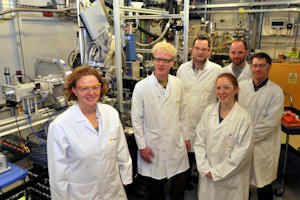Researchers discover new way of ‘locking up’ radioactive material
18 May 2016
Study could help find new way to clean up contaminated areas

University researchers have discovered that an iron oxide mineral, hematite, reacts with radioactive neptunium to ‘lock it up’ within its structure.
This could have profound implications for the environmental behaviour of the radioactive contaminant, as it may offer a new way to clean up areas contaminated with radioactive material.
Neptunium is a synthetic radioactive element which is generated as a by-product in conventional nuclear power reactors. It has a long half-life, meaning it will be around for millions of years, and it is potentially very mobile in the environment.
The Faculty of Engineering and Physical Sciences team worked with colleagues at Diamond Light Source, which harnesses the power of electrons to produce high-powered X-ray beams which can be used to study samples at the atomic level, to observe neptunium’s behaviour during the formation of iron oxides particles.
They found neptunium formed chemical bonds within the iron oxide structure, indicating it could be strongly bound within the mineral over a long period of time, potentially immobilising this environmental contaminant – and could be locked up in the mineral for the long term.
The team’s paper, in the Environmental Science and Technology journal, is part of a large research proposal funded by the Natural Environment Research Council which looked at geological disposal of radioactive wastes.
Their work has been aided by the STFC Environmental Radioactivity Network, enabling the team to perform the first experiments at Diamond on this radioactive element.
